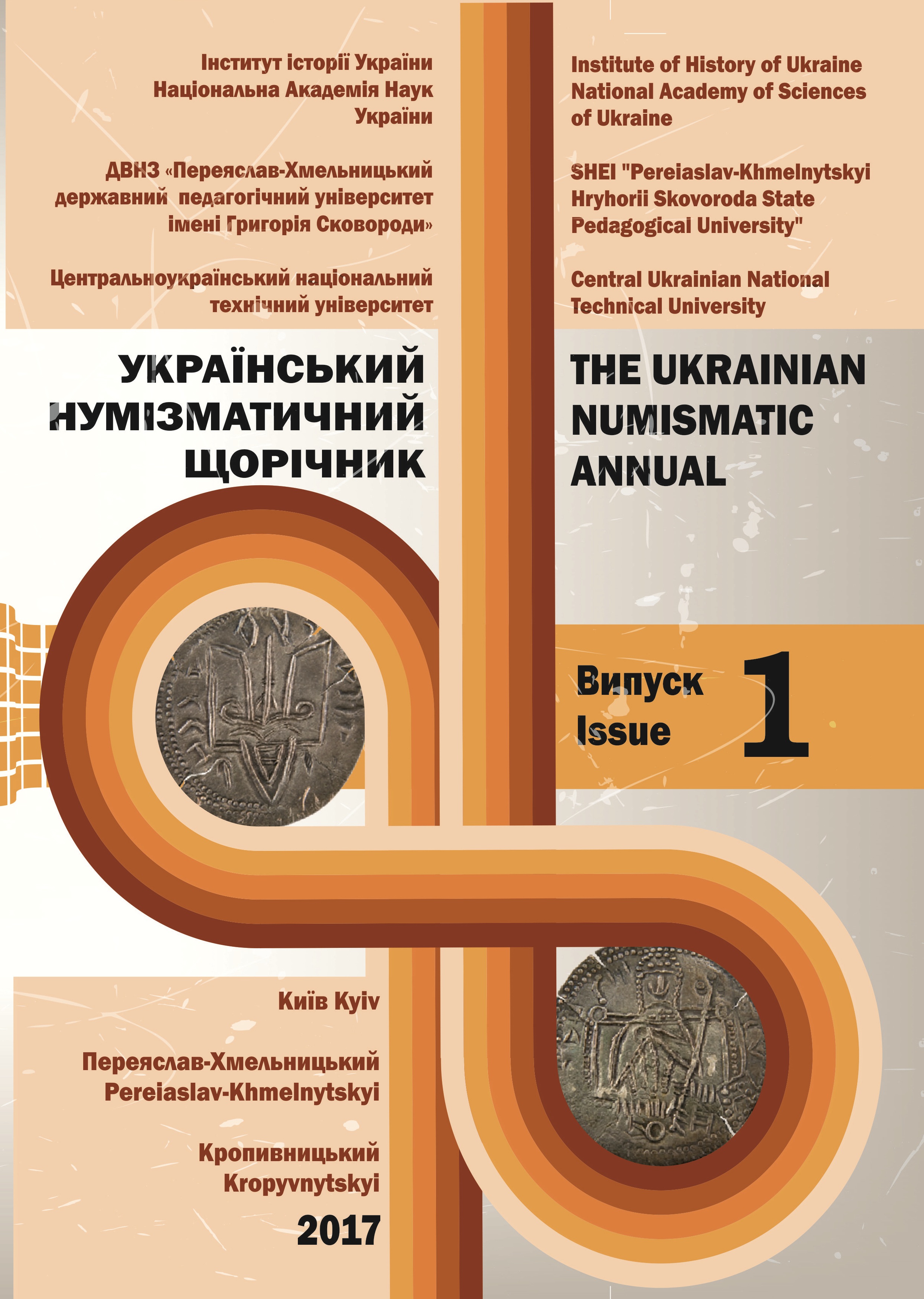Фальшиві монети Сигізмунда ІІІ Вази з Хмельниччини
COIN COUNTERFEITS OF SIGISMUND III WASA FROM KHMELNYTSKYI REGION
Author(s): Oleksii BakaletsSubject(s): History, Economic history, Political history, 16th Century, 17th Century
Published by: ДВНЗ Переяслав-Хмельницький державний педагогічний університет імені Григорія Сковороди
Keywords: Polish-Lithuanian Commonwealth; Sigismund III Wasa; szelags; grosz; coin counterfeiting;
Summary/Abstract: On the basis of research and analysis of coins of the late 17th and early 17th centuries, discovered in the territory of the South-West Khmelnytsky region in 2010-2016, the article describes the false solids and money of Sigismund III Wasa (1587-1632). An attempt was made to determine the possible centers of coinage of fake coins in Podillia in the investigated period. From numismatic literature and treasure material we know about false solids, money, half-wings of the Commonwealth of Sigismund III Vases (1587-1632), which occur in the coins and isolated finds on the territory of Central and Eastern Europe. But some publications about the treasures, which present these fake denominations on the territory of Khmelnytsky, are almost absent. Only a comprehensive study of treasure materials allows researchers to objectively assess the role and extent of a fake coin in the total mass of running money of a particular state or a specific region. On the basis of research and analysis of coins of the late 17th and early 17th centuries, discovered in the territory of the South-West Khmelnytsky region in 2010-2016, the article describes the false solids and money of Sigismund III Wasa (1587-1632). An attempt was made to determine the possible centers of coinage of fake coins in Podillia in the investigated period. From numismatic literature and treasure material we know about false solids, money, half-wings of the Commonwealth of Sigismund III Wasa (1587-1632), which occur in the coins and isolated finds on the territory of Central and Eastern Europe. But some publications about the treasures, which present these fake denominations on the territory of Khmelnytsky, are almost absent. Only a comprehensive study of treasure materials allows researchers to objectively assess the role and extent of a fake coin in the total mass of running money of a particular state or a specific region. The purpose of the article is to show, based on the latest sources of numismatics, the intensity, duration and significant use of monetary circulation in the West Podillya of the monetary affairs of the Polish-Lithunian Commonwealth and, in particular, fake money and solids of the time of the Sigismund III Wasa, indicate possible counterfeiting centers for these denominations. During the reign of Sigismund III Wasa, especially in the beginning of the seventeenth century, in the monetary circulation of the Polish-Lithuanian Commonwealth, new coins appear to produce silver and white coins: solid, money, half-tones, troyaks, shostakes, ortys (1/4 talera) of various types: crowns of Krakow, Bydgoszcz, Lithuania, Gdańsk, Elbląg, Riga. The presence of counterfeiters of the Riga solids, the money of Sigismund III in the treasures of the former Podolsky voivodship of the Polish-Lithunian Commonwealth of the late XVIIth – the beginning of the seventeenth century testifies to their popularity among the local population, as well as the existence of centers for the forging of these fakes in the West Podillya. In our opinion, it could be the city of Satan and Kamyanets-Podilsky. Secondly, the findings of the solids from the village. Kolodiyivka and the village. Luka- Barskaya, the elements of their apertures, reversals, legends, give most of the false solids of the Riga type of time Sigismund III are quite primitive and rude. Third, some solids and money from Satan's treasures were performed more qualitatively on the basis of copper coats with a silver coat, where the image of the date, the coat of arms, the letters «S», the crowns are clearer and closer to the originals. Perhaps these specimens were made by an experienced craftsman using the technologies that were practiced at the time of the monetarians when a relief image was applied to the copper circle using stamps.
Journal: Український Нумізматичний Щорічник
- Issue Year: 2017
- Issue No: 1
- Page Range: 98-107
- Page Count: 10
- Language: Ukrainian

